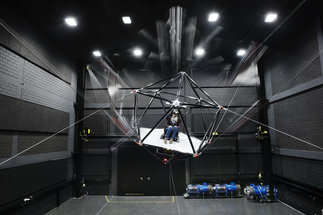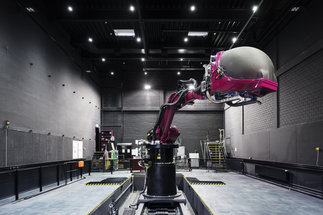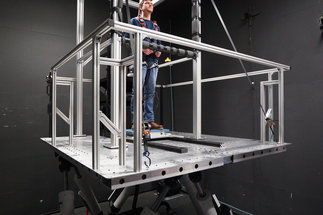Motion Simulators
Different Motion Simulators Help Study Human Perception
In order to simulate realistic environments and provide the illusion of moving through those environments, scientists in the Cyberneum used a variety of different hardware setups and software libraries.
A motion simulator allowed persons to be physically moved through virtual environments simulating the motion of driving cars and flying helicopters, for example. Please check out the individual simulators for more information.
The CableRobot Simulator provided a novel approach to the design of motion simulation platforms, as it used cables and winches for actuation instead of rigid links known from hexapod simulators. This approach allowed reducing the actuated mass, to scale up the workspace significantly, and provided great flexibility to switch between system configurations in which the robot could be operated. The simulator was used for studies in the fields of human perception and cognition research, flight simulation, and virtual reality applications.
[more]
The MPI CyberMotion Simulator was developed in-house, as an alternative to traditional motion simulators. It is based on a commercial six-axes serial robot originally designed for use in industries as manipulator.
[more]
With the CyberPod we combined virtual reality technologies with moving-base motion simulators. This platform could be moved in six degrees of freedom thanks to its actuated legs.
[more]



